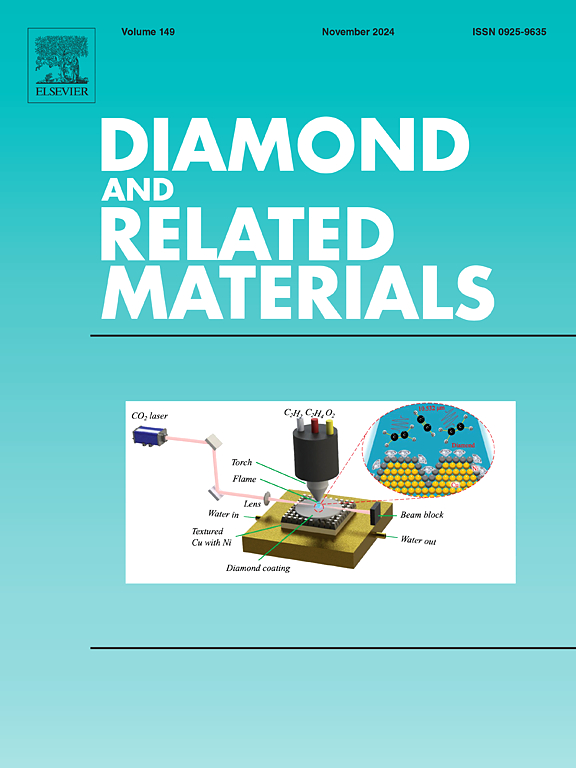DFT study on the adsorption and sensing of SF6 byproducts (SO2F2, SO2, SOF2, H2S, and HF) using Sc and Ti decorated BC6N monolayers
IF 4.3
3区 材料科学
Q2 MATERIALS SCIENCE, COATINGS & FILMS
引用次数: 0
Abstract
When high-voltage power circuits that operate frequently lead to sulfur hexafluoride (SF₆) gas deterioration producing hazardous decomposition products. It is essential to detect and remove these gases speedily to maintain the proper functioning of SF₆ circuit breakers. The gas adsorption along with sensing properties of SF₆ decomposition products including SO₂F₂, SO₂, SOF₂, H₂S, and HF on Scandium (Sc) and Titanium (Ti) decorated BC₆N monolayers underwent a computational analysis with density functional theory (DFT). The experimental findings demonstrate that pure BC₆N absorbs gas molecules poorly and releases them swiftly which prevents its usage in sensing technologies. However, when Sc and Ti decorate the material it results in increased adsorption capacity which enables improved gas detection efficiency. The adsorption energy values of Sc-decorated BC₆N span from −0.82 eV to −1.31 eV and Ti-decorated BC₆N exhibits values from −1.00 eV to −1.60 eV. Electronic structure analysis through band structure and work function variations and transport transmission shows Sc-decorated BC₆N demonstrates superior sensitivity although its adsorption energy is lower than Ti-decorated BC₆N. Gas desorption times can be shortened to nanosecond durations through UV irradiation at 297 K and thermal heating at 497 K. Research findings reveal theoretical information about Sc- and Ti-functionalized BC₆N monolayers showing promise as efficient sensing devices for detecting SF₆ decomposition products.

Sc和Ti修饰BC6N单层膜对SF6副产物SO2F2、SO2、SOF2、H2S和HF的吸附和传感的DFT研究
当高压电力线路频繁运行导致六氟化硫(SF₆)气体变质产生有害分解产物时。快速检测和清除这些气体对于保持SF₆断路器的正常运行至关重要。利用密度泛函理论(DFT)计算分析了SF₆分解产物so2、so2、sof2、h2s和HF在钪(Sc)和钛(Ti)装饰的BC₆N单层上的气体吸附和感测性能。实验结果表明,纯BC₆N对气体分子的吸收能力差,释放速度快,阻碍了其在传感技术中的应用。然而,当Sc和Ti装饰材料时,它会增加吸附能力,从而提高气体检测效率。sc修饰的BC₆N的吸附能在- 0.82 eV ~ - 1.31 eV之间,ti修饰的BC₆N的吸附能在- 1.00 eV ~ - 1.60 eV之间。通过能带结构、功函数变化和输运透射的电子结构分析表明,sc修饰的BC₆N虽然吸附能低于ti修饰的BC₆N,但其灵敏度更高。通过297 K的紫外照射和497 K的热加热,气体解吸时间可以缩短到纳秒。研究结果揭示了Sc和ti功能化的BC₆N单层的理论信息,显示了作为检测SF₆分解产物的有效传感装置的前景。
本文章由计算机程序翻译,如有差异,请以英文原文为准。
求助全文
约1分钟内获得全文
求助全文
来源期刊

Diamond and Related Materials
工程技术-材料科学:综合
CiteScore
6.00
自引率
14.60%
发文量
702
审稿时长
2.1 months
期刊介绍:
DRM is a leading international journal that publishes new fundamental and applied research on all forms of diamond, the integration of diamond with other advanced materials and development of technologies exploiting diamond. The synthesis, characterization and processing of single crystal diamond, polycrystalline films, nanodiamond powders and heterostructures with other advanced materials are encouraged topics for technical and review articles. In addition to diamond, the journal publishes manuscripts on the synthesis, characterization and application of other related materials including diamond-like carbons, carbon nanotubes, graphene, and boron and carbon nitrides. Articles are sought on the chemical functionalization of diamond and related materials as well as their use in electrochemistry, energy storage and conversion, chemical and biological sensing, imaging, thermal management, photonic and quantum applications, electron emission and electronic devices.
The International Conference on Diamond and Carbon Materials has evolved into the largest and most well attended forum in the field of diamond, providing a forum to showcase the latest results in the science and technology of diamond and other carbon materials such as carbon nanotubes, graphene, and diamond-like carbon. Run annually in association with Diamond and Related Materials the conference provides junior and established researchers the opportunity to exchange the latest results ranging from fundamental physical and chemical concepts to applied research focusing on the next generation carbon-based devices.
 求助内容:
求助内容: 应助结果提醒方式:
应助结果提醒方式:


